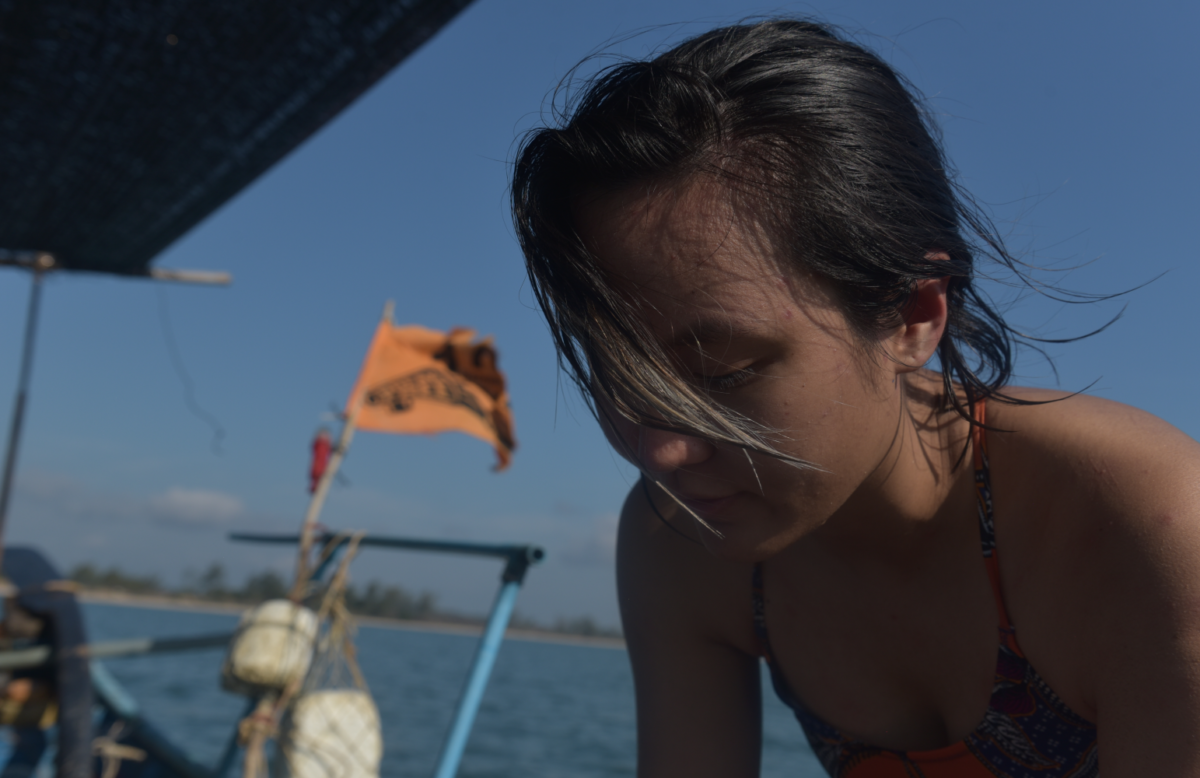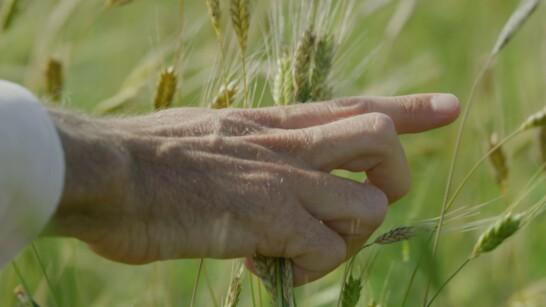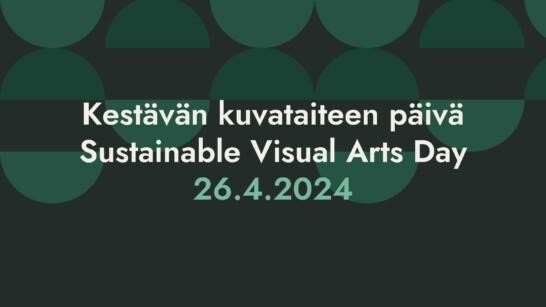News
Questions of time, knowledge and local sensibilities in a biennial context – Thailand Biennale, Krabi 2018

This interview with Palin Ansusinha continues the series conducted by the artist Jana Winderen and Executive Director and curator Paula Toppila to increase awareness and understanding of the environmental changes caused by human beings taking place not only in the Baltic Sea but also in other water systems. Ansusinha worked as Jana’s research assistant in her Through the Bones project, in Krabi for the Thailand Biennale 2018 and in Chana, Songkla province, South Thailand.
Since the biennial she has continued to work with local communities in the region to show her support and to save the livelihoods of the local fishermen. Apart from that, Ansusinha works as an English editor for ซอย | soi, a platform for writing, editing and publishing in the expanded field based in Bangkok, where she translates Thai literature into English and works with artists in consultancy.
The technique of listening to fish, crustacea, coral and mammals in the Ocean using an oar held to the head is a technique that has been known to fishing communities from Greenland to Thailand for thousands of years. Through the Bones is based on this knowledge, combined with technology and hydrophone-recording techniques. Jana Winderen has made field trips for this project to learn more about the technique and to learn how villages in Thailand that practice local, sustainable fishing maintain a healthy, vibrant community by carefully looking after the environment and people.
First encounter with the site
Palin Ansusinha (PA): After graduating from my BA course and returning to Thailand, I applied to become a volunteer for the biennial, as a translator for international artists during their site visits. I was paired up with Jana for the whole trip while we were taken by the Ministry of Culture’s officials to the different sites. All of the sites that were chosen for the biennial are state-managed; national parks, tourist beaches or community forests that are organized in a way that would cater to tourism. This makes sense for a state-funded biennial, so that anything that happens to be within the site would have to stay within their rules and regulations.
We were taken to all these “beautiful sites,” as the Krabi governor put it, and we ended up in one place called Tha Pom Klong Song Nam [ท่าปอมคลองสองน้ำ] – a community forest run by the local community of Tha Pom. There is a stream where saltwater and freshwater meet, flowing through a mangrove forest and eventually into the Pali river and the Andaman Sea. As visitors, we were prohibited to touch anything, except to walk on these concrete pathways built above the stream or swim in a designated area. There were many protocols that were trying to preserve this very pristine idea of nature, where people have been taken out of the picture and positioned as mere observers or even consumers of such a spectacle.
But what was interesting to me at the time was how Jana’s work pointed towards another strand of relationship that perhaps evades hypervisibility or refuses to be immediately consumed or understood. Listening to the landscape calls for a different kind of relationship to your surroundings – more intimate and physical – and it was this that led us towards something that had been made absent in this spectacle of nature.
Getting to know the community of fishermen
Jana Winderen (JW): Yes, we met Useng on those paths and we had a listen in the river, actually where the freshwater meets the sea, as far as where the tide comes up into the mangrove. And like Palin said we couldn’t touch the water or go to the water, or even touch the trees either. And also we couldn’t really stay there after dark. But we talked to Useng, and we started to listen to the water with the hydrophones. We were allowed to stay there with him and also to make recordings of bats, because it needed to be dark, so we did ultrasound recordings. We decided to come back at six o’clock in the morning to go up the river with a boat to do recordings there. Already then, it felt totally wrong to think about installing anything like speakers and solar panels in this environment – why would you add more sounds or stuff to this already fantastic-sounding environment.
PA: One very important feature about this place is that the fishermen can only take the boats out according to the tides. That’s when they go out fishing. The local guide didn’t turn up that day, so we talked to a fisherman called Gai, who offered to take us up the river for Jana to do some recording from the stream towards the mouth of the river. So we were listening to the river through the hydrophones, only to learn that what we were hearing has already been heard by the fishermen through their wooden oars and the belly of the boat for many generations.
JW: I had already written in my sketchbook before I left for Thailand that I would like to figure out how it works with putting an oar to your head and into the water like they do in the Arctic, to listen to the whales, when hunting them. It felt very much like a great coincidence when we were sitting there in the boat listening, and Mhan, another fisherman, came by in his boat. He was wondering what we were doing. I let him listen to the headphones and he said here is how I listen to those sounds under water. And he just put an oar to his head. And he showed us how he had learned from his grandfather to listen. And then also Gai showed us how he was listening in the belly of the boat.
So many times I have been out with people in boats and they never think about turning off the engine and the sonar. Unlike these guys, who were listening as a way of also orientating themselves underwater, and immediately turned the engine off when we stopped
Ecologically sustainable solutions in artwork production
JW: To go back to the project for the Thailand Biennale, we then decided that we would invite the audience to come along with Supan and his networks of fishermen, to come at high tide when they would normally go out fishing, and go down the river in a boat. We made more oars with Bang Yoh, who made them specifically for the project from the hardwood that would transmit the sound well. We spent a lot of time testing different types of wood which would transmit the sound the best. And then we made this oar-to-the-head symbol that we engraved onto each oar. Palin found a local place that would burn the symbol into the oar. And then we also made the signage, all this in wood, so as not to add any plastic or metal that needed to be thrown away, but things that could actually biodegrade into the environment again.
They took people down the river, and Supan, would show them how to listen in the water with the oar. People would sharpen and focus their listening. They were taken all the way down, in between the mangrove forests, to the mouth of the river. We did a restoration of the floor of a former teahouse right at the mouth of the river, where they were left to listen for as long as they wanted. Because people were already then aware of listening, I think they mainly understood that they should just listen there. People were free to spend as much time there as they wanted, but they needed to go back up the river again before the tide was too low. So, instead of looking at their watch, they needed to look at the tide.
PA: But they didn’t know when the tide would rise or descend so they had to always rely on the fishermen to tell them when they can go and when they can’t go.
JW: So, I think it was a team of seven fishermen, mainly Supan, I think.
PA: Yes, and his networks.
JW: This was our contribution to the biennial, and I think it made an impression on people. I remember taking Joshua Jiang the curator down there, and he kind of got it by doing it, that you actually don’t need to install some kind of object. Also, the ongoing work that Palin is doing and I’m also working on continuously, this kind of knowledge of listening underwater, it is dying out, that is one aspect. And the whole continuous fighting for the life and livelihood of the people there.
Learning about the history of the place
PA: The big question for the both of us at the time was how does this biennial benefit local people? Jana’s work in Krabi attempts to think about the ways we can collaborate with the fishermen without us imposing a new set of rules or our own sets of knowledge onto them. How can we engage with the knowledge that is already there, embodied in the people and their surroundings? In the end, the work didn’t need any technology. If it did, the question would be: who really has access to the technology to be able to tell a story or the authority to name or explain the world away? The stories already exist in the landscape, in the fishermen who are the real storytellers.
Working with them we learned about how the canal has changed over the years, how there used to be industrial shrimp farms that toxified the river with fertilizers and chemicals. We also learned how the owners of the land wanted to develop the area into a resort, which is not surprising since Krabi is very much colonized by investors from Bangkok, with much of its resources expropriated by the state and local mafias. Our experience in Krabi only touched the tip of the iceberg that is the bigger and more chronic problems Thailand has been facing for many decades, specifically how resources are privatized and plundered, forcibly removing many communities from their lands. So for me, it wasn’t a coincidence that we met Bang Nee, who we got to work with in Chana, in Songkhla. He was one of the leaders of the anti-power-plant movement in Thepa at the time, fighting against the military government’s mega-project to industrialize the whole of the South, which is threatening the livelihood of his community.
It was quite funny when we first talked with him on the phone and I told him about how Jana uses the hydrophones to listen to fish. He got a bit competitive as he is a fish listener, Doolam [ดูหลำ], so he invited Jana for a visit to see who would get more fish.
JW; It was so great. We did travel to Chana for the first time for a week. And this was before the actual biennial opening.
PA: Yeah, before. And you came back for that.
JW: And I will come back again. This kind of project, you really develop in close relationship with local people. Bang Nee and the community had been working to get the biodiversity and the fish back into the area for the last 30 years. Because, 30 years ago, there was hardly any fish left after overfishing by large trawlers. The local community that used to fish there had to travel a long way to get fish. It broke up the community and families. Though, through work and care they managed to slowly and surely get the fish back. And now there were more than 140 species, and the richest biodiversity of fish that I have ever heard of. I was totally amazed to listen to it, when we went out night recording in the bay. It was mind-blowing, the amount of sound from the fish. And the knowledge of Bang Nee and Bang Het, who we were out with. On land, Bang Nee made a huge drawing, from where we looked at where we had been recording and what we heard. And in this bay all these different species that we were looking up. It was sort of mapping the different species with the drawing, and by listening.
It is a totally devastating fact that all this will be gone again, after another 30 years. Everybody in the community was working towards preservation, of course, because it is a question of life and death for the people here.
COVID-19 crisis highlights the problem of food security
PA: During Jana’s second visit, in May 2019, the government had just announced that the cabinet had greenlighted the project to industrialize the Chana district, which involves building a deep-sea port and gas-separation plants over three counties, including Suan Gong where Bang Nee lives. There was no public participation involved in the decision-making process; they even barred people from attending their so-called public hearings. There’s been constant harassment from state officials of the local communities who are vocal about their opposition to the project.
The people in Chana have been mobilizing themselves against the plan for years, but it’s more difficult now the military government has accelerated and bypassed many legal steps to push this project forward. However, I think things have started to change this year during the lockdown, when many chronic problems have been accentuated, including the government’s ineptitude in managing the crisis.
Those who suffered most are migrant labourers in the cities without access to basic rights and necessities, whereas local fishermen, like Bang Nee, who care for these resources, become so important in nurturing people who are in need. Suan Gong fishermen helped by donating their catches to the local hospitals in Songkhla, while we also witnessed another fishing community in the South trading fish for rice from farmers in the North, and many others. These models become essential in times like this, and it demonstrates how the people in Chana are not only fighting for their community’s survival, but for an alternative economic vision that doesn’t leave anyone behind.
In Thailand, the new generation is leading a nationwide movement demanding the abolition of many oppressive structures and practices in Thai society. But the call for democracy isn’t just about getting rid of the military government or reforming the monarchy. It prompts us to imagine an entirely different relationship that we could have with one another, one that liberates us from the same kind of feudal or patriarchal power.
Last week, Bang Nee led 40-50 people from Chana to protest in front of the Government House against the State’s industrial-estate plan. The Chana movement has gained so much support from the new generation and this shows that they are no longer fighting alone – something I hope will continue also for many other communities who are threatened by the same problem. What I also hope is for more climate-change activists to come out to support the nationwide movement, since the problem of ecological destruction is inseparable from the problem of economic inequality that continues to threaten the livelihood of those who are actively caring for the environment.
Reimagining a new model for international exhibitions
PA: Working with Jana has led me to become more interested in knowledge production and distribution in the art and cultural industry, especially when I initially entered this world as a translator, as someone who can make things move across cultures and contexts. For me, Jana’s project, Through the Bones, allows me to become more aware of the issues of epistemic violence in the artworld, and to begin asking questions like: what is deemed ‘knowledge’. What and whose stories are being told, retold, archived, remembered, and what else gets discarded or forgotten?
I was talking to Jana the other day about how the pandemic disrupted the whole international artworld logistics. I’m just wondering to what extent migrating the same models of exhibitions or programmes online can allow us to adapt to the crisis. Isn’t it time to reimagine a new model and to become more engaged in what is happening locally? And to really question, as cultural institutions or artists who benefit from those cultural institutions, what we can do to redistribute this capital, and how we can engage more with local struggles. I guess this is what we all have to keep asking ourselves.


